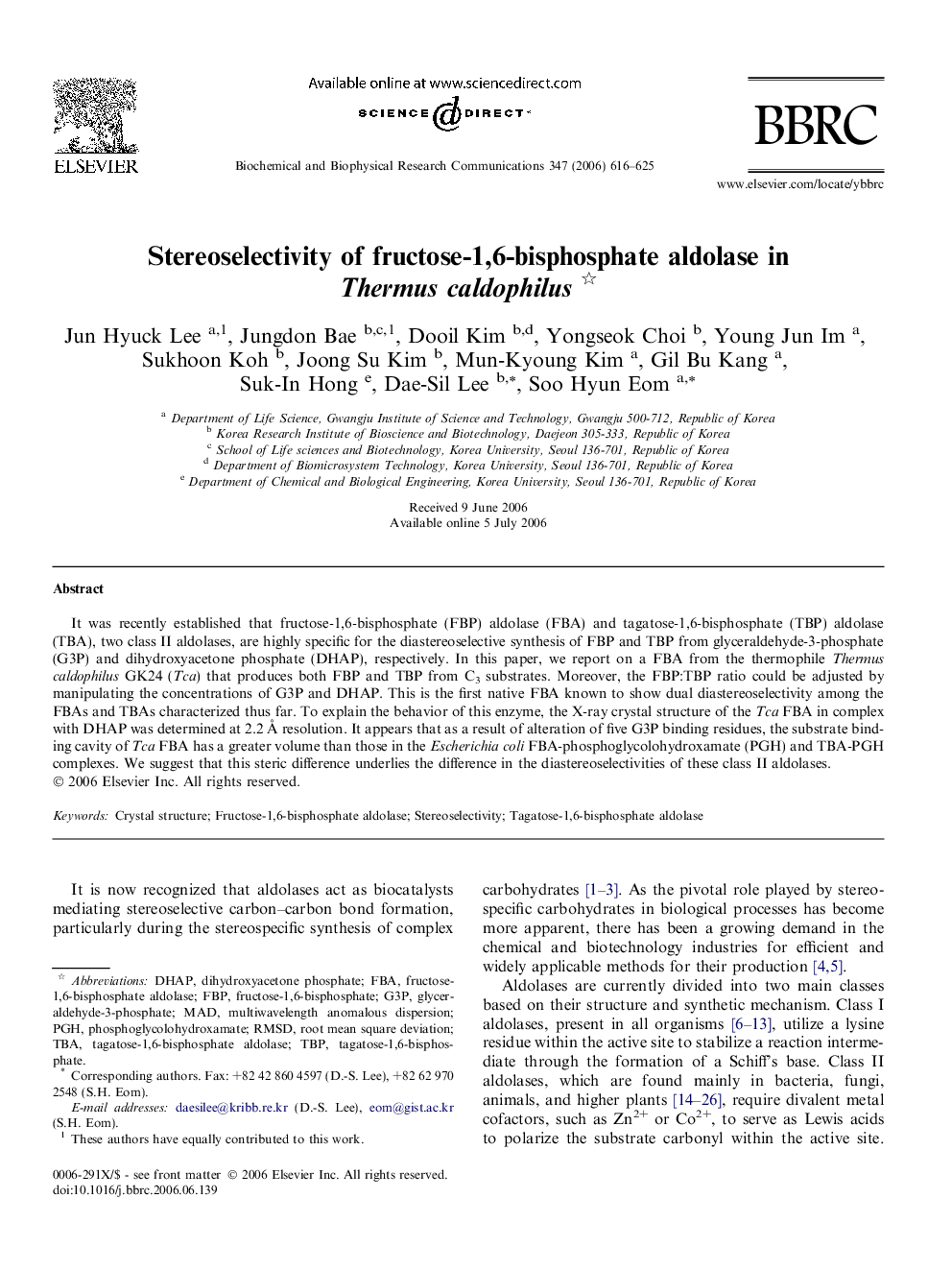| Article ID | Journal | Published Year | Pages | File Type |
|---|---|---|---|---|
| 1939119 | Biochemical and Biophysical Research Communications | 2006 | 10 Pages |
It was recently established that fructose-1,6-bisphosphate (FBP) aldolase (FBA) and tagatose-1,6-bisphosphate (TBP) aldolase (TBA), two class II aldolases, are highly specific for the diastereoselective synthesis of FBP and TBP from glyceraldehyde-3-phosphate (G3P) and dihydroxyacetone phosphate (DHAP), respectively. In this paper, we report on a FBA from the thermophile Thermus caldophilus GK24 (Tca) that produces both FBP and TBP from C3 substrates. Moreover, the FBP:TBP ratio could be adjusted by manipulating the concentrations of G3P and DHAP. This is the first native FBA known to show dual diastereoselectivity among the FBAs and TBAs characterized thus far. To explain the behavior of this enzyme, the X-ray crystal structure of the Tca FBA in complex with DHAP was determined at 2.2 Å resolution. It appears that as a result of alteration of five G3P binding residues, the substrate binding cavity of Tca FBA has a greater volume than those in the Escherichia coli FBA-phosphoglycolohydroxamate (PGH) and TBA-PGH complexes. We suggest that this steric difference underlies the difference in the diastereoselectivities of these class II aldolases.
